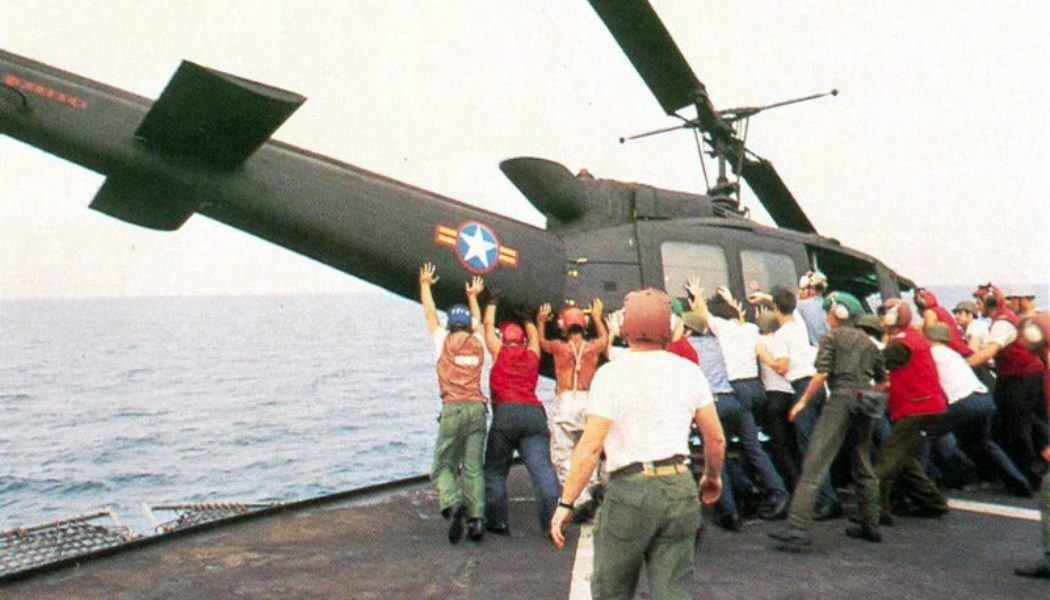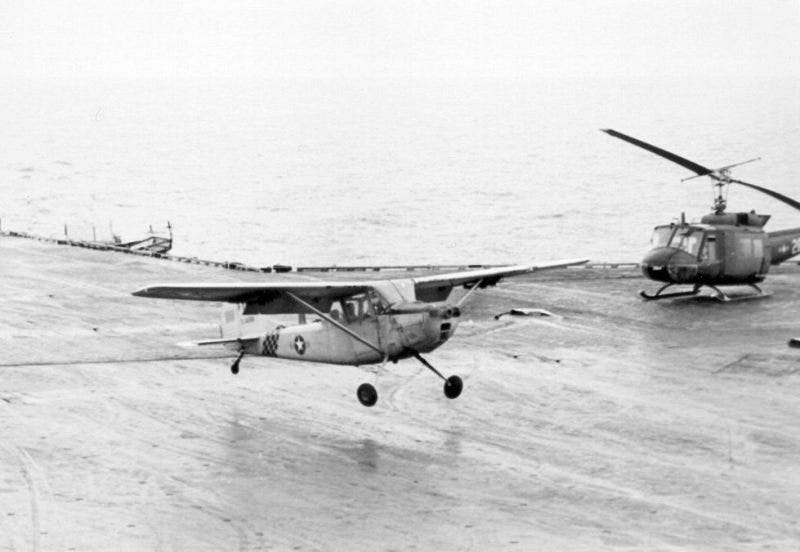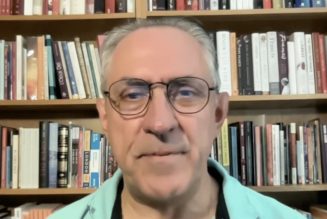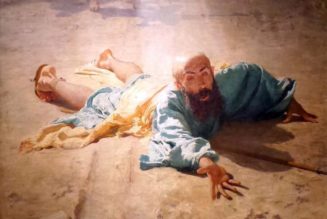Somewhere, a few thousand feet beneath the waves of the South China Sea, there are a dozen or two helicopters. If an expedition came across them, they might believe that there was some great battle that had been fought in those waters. Perhaps they would see the emblem on the helicopters—a blue circle with a white star and red stripes— and wonder, “did America suffer some catastrophic loss here?” But if they looked closer, they might notice something else. Something unexpected. The choppers would be undamaged, save for that done by time and water and salt. The expedition would find no torn metal, no broken landing gear, no rotors destroyed. They might believe that, as incredible as it seems, the Americans intentionally scuttled their own equipment. But, for what possible purpose would a military force destroy their own equipment? Faced with such a question, perhaps they might remember the words of G. K. Chesterton, who once opined, “The true soldier fights not because he hates what is in front of him, but because he loves what is behind him.” Only, in this case, April 29, 1975, what they loved was above them.
Step One…
This was the end of the Vietnam war, and the USS Midway–and the entire 7th fleet–was tasked with saving as many South Vietnamese refugees as possible. Some might claim that the saving of refugees was certainly not in the vital national interests of America. Perhaps not. We always have the option of seeing the person, lying in a ditch, and continuing on. We are free to leave them, telling ourselves as we go, “they are not my neighbor.” Or, when we see them, we can be moved with compassion, and bind up their wounds, and show them mercy. Perhaps this is really the only national interest of Samaria.
Perhaps the 7th fleet found that day that they could be both Americans and Samaritans.
That day the USS Midway had already saved thousands of refugees. Chopper after chopper came and landed, bearing displaced families. And then came a sight that must have caused the sailors on board to gaze in astonishment: a small Cessna, circling them from above. Three times the pilot attempted to drop a note onto the deck of the carrier. Three times the wind took it.
On board the Cessna was one Maj. Buang-Ly of the Vietnamese air force. Though he had likely flown many missions during the war, this was to be his most important. Although the tiny plane only has seats for two souls, Buang-Ly had managed to fit 6 on board in addition to himself: his wife and their five small children. His youngest, 14 months, sat on the lap of his mother. The other 4 children, the oldest being only six years old, huddled in the plane’s tail section.
Buang-Ly was starting to run out of items to toss out of his plane. Perhaps fittingly, his fourth note he attached to his pistol–a pistol meant to save his life. It turns out it did. The pistol, with his note tucked into the holster, dropped onto the deck of the Midway.
The note read, “Can you move the helicopter to the other side, I can land on your runway, I can fly for one hour more, we have enough time to move. Please rescue me! Major Buang, wife and 5 child.”
“…and when he saw him, he had compassion on him…”
The Midway was commanded by Capt. Lawrence Chambers. He had been given command of the carrier only a few weeks before. Chambers consulted the Admiral in charge to apprise him of the situation. The Admiral told Chambers to instruct the plane to ditch. Other pilots that day had ditched as well. The problem though, Chambers realized, was that those were helicopter pilots. They would be ditching after a fairly controlled water landing. The Cessna was a fixed wing aircraft, with no way of making a controlled water landing with the possibility of having the small children in the tail section surviving the impact.
Chambers faced a decision. Continue on and leave the man in the air to fend for himself, or stop, and help his neighbor. Chambers realized what Buang-Ly did not, that simply moving one or two choppers to one side would not give him enough room to land. There was only one possible solution: push enough helicopters overboard to give Buang-Ly a chance. Fully believing that a court martial awaited him, and that his career, and possibly his freedom, would be at an end in a few hours, Chambers gave his order: scuttle the helicopters.
“Give me a ready deck”
As he watched millions of dollars in equipment sink to the sea, along with any chance he ever had of continuing in the Navy, Capt. Chambers gave an order to Cmdr. Vern Jumper who was in charge of all flight operations aboard the ship. “Vern, give me a ready deck.”
The entire crew jumped into action. One by one choppers went into the sea. But, one by one more choppers landed, as they approached and saw there was available space aboard the ship. They would be pushed into the sea too.
The deck was cleared. Wet, but cleared. However, this was a Cessna that needed to land on the deck. A plane that has no tail hook because it was never built to land on a carrier. Not only that, it had to be landed by a pilot who had never seen a carrier much less attempted to land on one. It would be his first attempt. He wouldn’t get another.
The quick thinking Chambers knew that if Buang-Ly, his wife, and five children were going to have any chance, he would need some additional help from the ship itself. Chambers ordered his ship to turn directly into the headwind and make steam for 25 knots (29 mph). This would allow the plane to approach with a roughly 46 mph headwind to assist in slowing the landing. There went the aircraft carrier, speeding along at nearly top speed. All 1001 feet of it. All 64,000 tons of it. A floating city whose one purpose at that moment was to save a family. Or, perhaps, saving families was always its mission.
Perhaps that is meant to be the mission of every US carrier. “…But because he loves what is behind him.” Though sometimes we might forget.
The men above the Midway were certainly reminded that day, as they watched Buang-Ly glide into a perfect landing on their deck. Capt. Chambers would later report, “…the aircraft cleared the ramp and touched down on center line at the normal touchdown point. Had he been equipped with a tail hook he could have bagged a number 3 wire. He bounced once and came stop abeam of the island, amid a wildly cheering, arms-waving flight deck crew…” Years later, Chambers would remark that Buang-Ly is “The bravest guy I know.” This landing made Buang-Ly the first Vietnamese pilot to ever land on an aircraft carrier. Those on the ship marveled at his piloting expertise, and bravery as a husband and father.
And the next day he took out two denarii and gave them to the innkeeper, saying, “Take care of him; and whatever more you spend, I will repay you when I come back.” —Lk. 10:35
Maybe the crew had this verse in mind when they established a fund for the Buang family. Maybe they thought of it when Chambers was raised to the rank of Rear Admiral. Maybe they thought it when Buang and his entire family became American citizens.
What we can say is that Buang and Chambers started out the morning of April 19th as citizens of different countries. One American. One Vietnamese. But it so happens that they had dual citizenship all along. It turns out they were both Samaritans. They both saw the need of others and were willing to give their lives, and livelihood for their neighbor. For in the end, the greatest Americans, the greatest Vietnamese, the greatest citizen of any country, are always first citizens of Samaria.
Join Our Telegram Group : Salvation & Prosperity











